This site contains affiliate links. I may earn a small commission, at no extra cost to you.
This post shows you how to double cleanse your face properly, whether you have an acne, dry, combination or oily skin type.
Double cleansing feels like a huge skincare trend in the last couple of years, and unlike most skincare trends, double cleansing is one that I really think is important if you struggle with clogged pores, acne and skin texture.
In this post I’ll provide a step by step guide on how to double cleanse, my personal tips for the perfect double cleansing routine and handy product recommendations for along the way.
What is double cleansing?
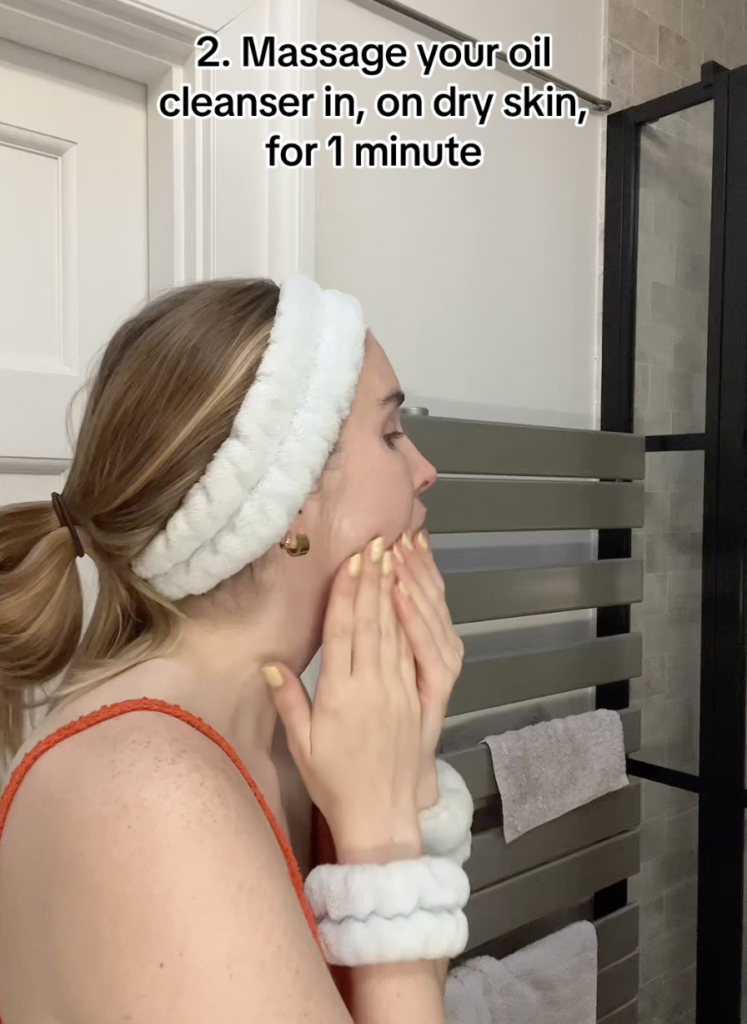
Let’s start with the basics: what is double cleansing and how does it work? Double cleansing is a skincare cleansing technique, that involves using two cleansers to achieve a more thoroughly cleansed face.
The idea is that the first cleanse is done with an oil or balm cleanser to remove excess makeup, oil and sunscreen.
The second step for double cleansing is to use a water based cleanser to cleanse one more time. This removes any smaller leftover particles of dirt, sunscreen and makeup. In addition, it also helps remove any residue from the oil cleanser.
Benefits of double cleansing
The benefits of double cleansing are that, by using two separate types of cleansers, you get a deeper cleanse that removes oil, dirt and debris from your pores.
Over time you should see less acne breakouts, clogged pores, skin texture and a glowier, glass skin complexion.
Which skin types should double cleanse?

I get a lot of comments on my TikToks where people who have oily, acne prone skin ask if you can double cleanse with oily skin. The answer is yes, and if you’re wondering which skin types can benefit from double cleansing, the answer is all of them! It’s all about choosing the right double cleansing products.
Some people find that double cleansing makes their skin dry, and this can be true if the cleansers aren’t suitable. Similarly, my followers often complain about acne breakouts from using oil cleansers. I’ve experienced this too, but this is not because oily or acne prone skin can’t use oil – that is a myth. Instead it is often because of other ingredients in the oil cleansing formula.
Later on in this blog, I share the ingredients I avoid in double cleansing products.
Can you double cleanse with the same cleanser?
People often ask if you can double cleanse twice with the same cleanser, or whether you can double cleanse with micellar water.
These are both variations on double cleansing that may work for some people, but in my opinion are less effective for most people.
Using two oil based cleansers
If you use an oil or cream cleanser twice in a row without a water based cleanser, the oil cleanser may leave an oily residue on your face, whether or not you can see it.
This is often why people see breakouts from using them, because they are not washing off that residue.
Using two water based cleansers
You might remember from science class that ‘oil attracts oil’ and water and oil don’t mix effectively. The same is true with double cleansing and using oil based cleansers.
Oil cleansers attract and break down oil from your skin, makeup and sunscreen in a unique way that not all water based cleansers can. This is where double cleansing really comes from.
Double cleansing with the same water based cleanser twice may not give you this benefit, and therefore not cleanse your face as effectively. Of course water based cleansers contain surfactants (skin cleansing ingredients), but oftentimes surfactants can be stripping and drying.
This means that, even if they do cleanse your skin as thoroughly, you are likely to feel very dry after doing so.
Double cleansing with micellar water
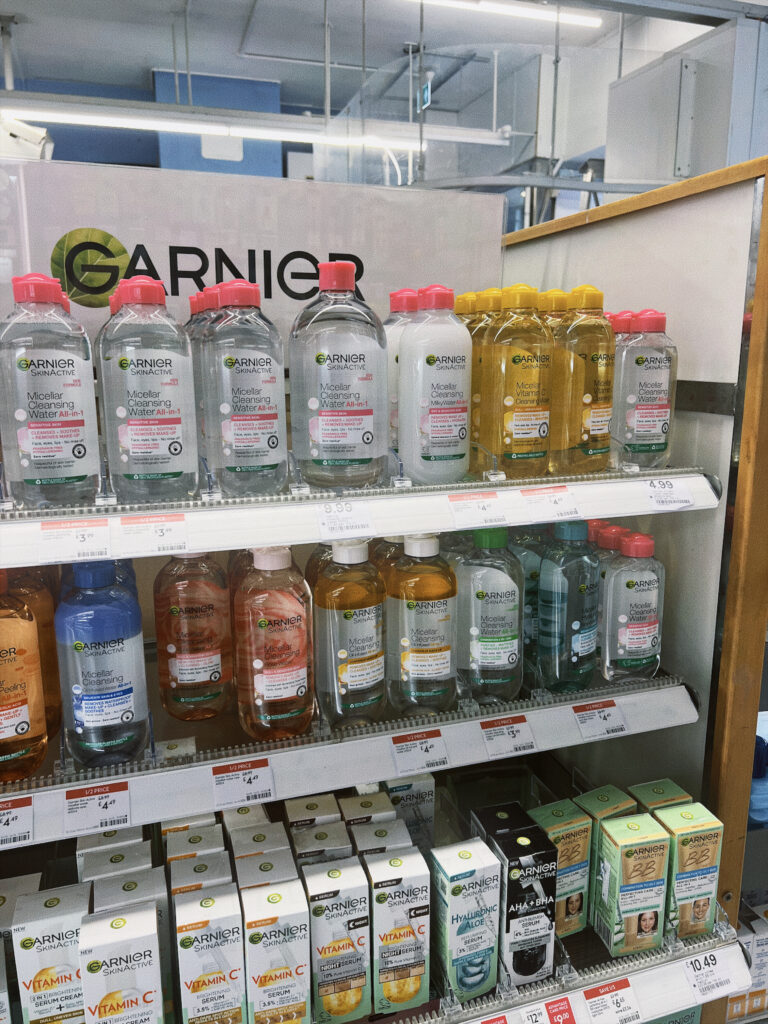
Again, another common question is whether you can double cleanse with micellar water instead of an oil cleanser. Sure, you can, but you will be missing out on those oil cleansing benefits for a slightly different reason.
Micellar water is actually very clever in that its molecules contain ‘hidden’ oil molecules suspended in water, which is why they remove makeup well.
However, I personally still believe that they do not compare to manually massaging an oil into the skin. You can see how a quick swipe feels less thorough than a facial massage with an oil.
Double cleansing method: step by step
Let’s get into how to double cleanse your face with a step by step guide. This is exactly how I do it. Later on, we’ll talk about some tips to perfect your double cleansing routine.
1. Remove your eye makeup (optional)
This step is personal preference, but I like to remove my eye makeup with a separate eye makeup remover before I begin. I find it difficult to massage an oil cleanser into my eyes and get every little bit of mascara off, so I do it with a reusable cotton round and makeup remover.
I used to hate the idea of resuable cotton pads, but now that I’ve tried them I much prefer them.
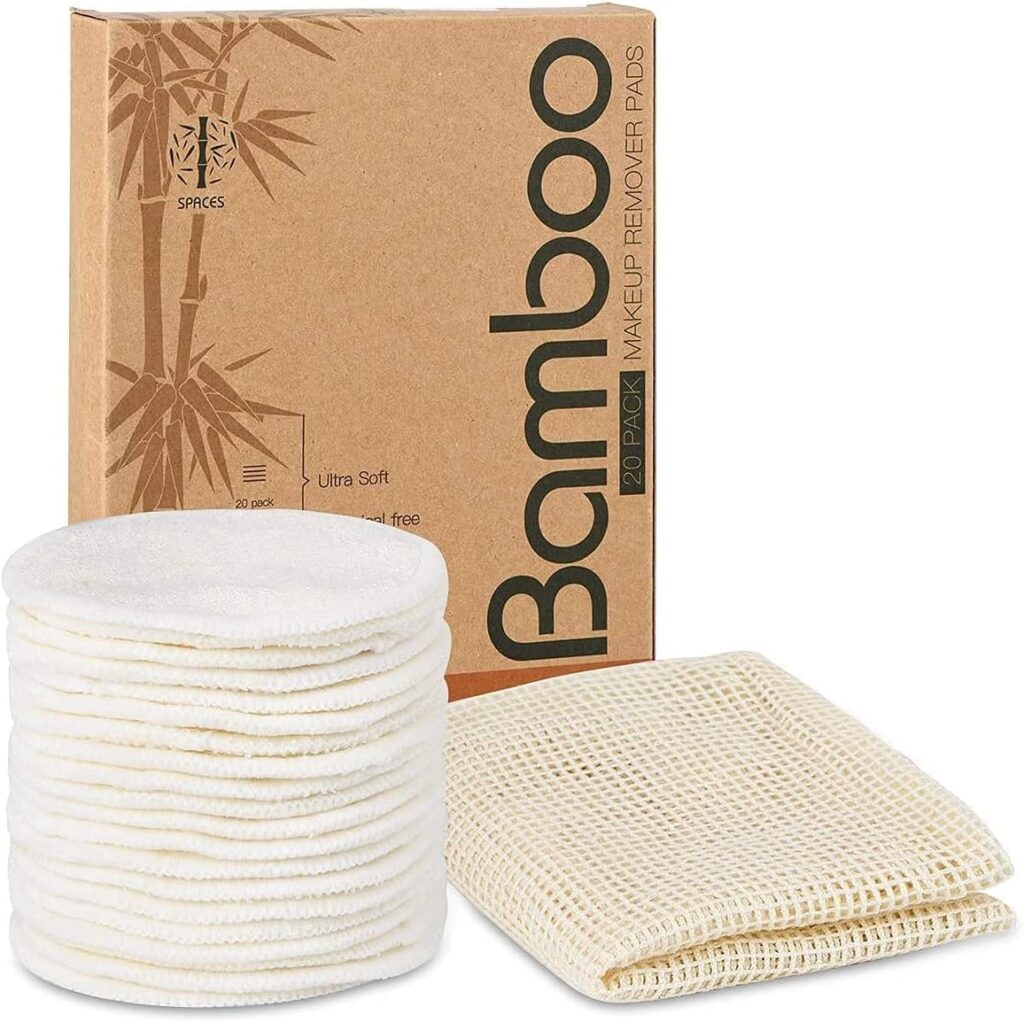
My favourite eye makeup remover is the Flawless Cleansing Water by Dr Sam’s. I feel like it removes eye makeup most easily out of all of the ones I’ve tried. If you’d like to use my Dr Sam’s skincare discount code it is ‘NATALIEONEIL’ for 10% off.
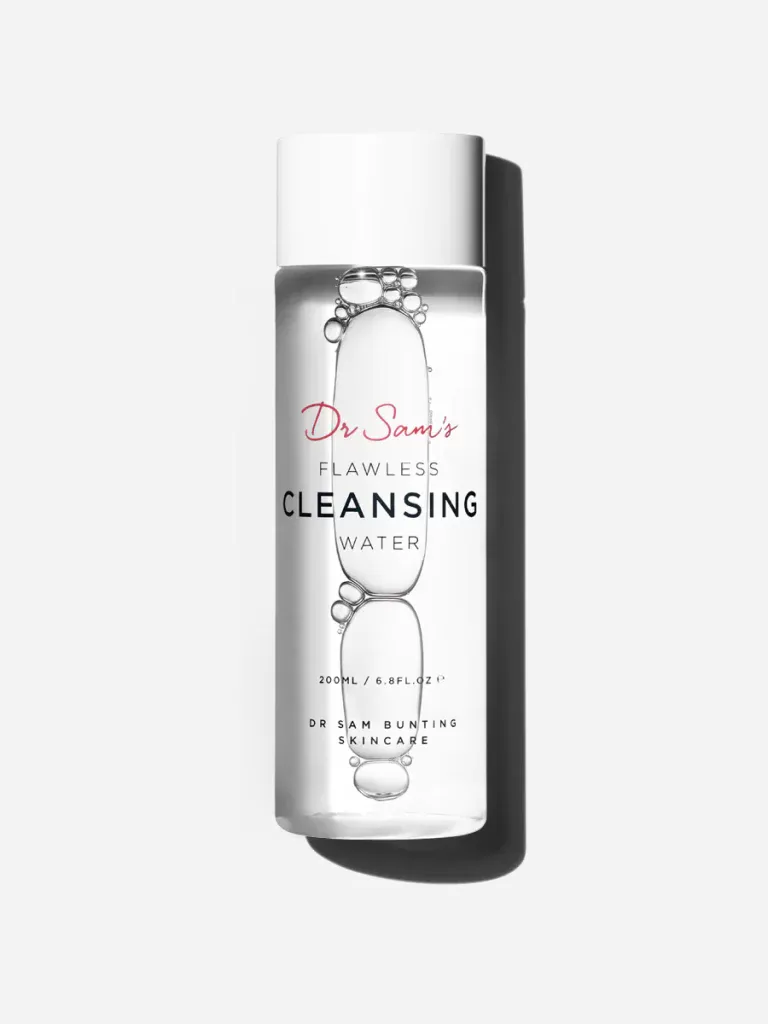
2. Apply your oil, balm or cream cleanser
On dry skin, massage in your oil, balm or cream cleanser. It’s important that it’s dry skin, otherwise the cleanser will mix with water and emulsify on your face before you’re ready!
I recommend massaging the cleanser for around 45 seconds to 1 minute. Swipe it across all of your face and neck, then massage the cheeks, forehead, neck and nose.
If you have problem areas with more congestion, such as the nose, spend a little extra time on these areas. Your hands combined with the heat, pressure and oil, will help to loosen any congestion and clogged pores.
3. Facial massage or gua sha (optional)
If you’d like to try facial massage or use a gua sha tool, now is the time to do it. If I’m in the mood or have time, I usually do one minute of facial massage after I’ve finished step one. You want to make sure you’re massaging the skin with some oil for slip, rather than dragging the skin.
4. Emulsify the oil
Now that you’re done with the oil cleanser, it’s time to add a little warm water to your hands and massage it gently onto your face for a few seconds. You’ll notice the oil cleanser turns slightly white, and this is it emulsifying.
Grab your face cloth (or hands if you prefer) and wash off the oil cleanser for roughly 15 seconds. It doesn’t have to be perfect, just get the bulk of it off, because we’re going to be using a water based cleanser next to truly remove it.
5. Apply your water based cleanser
Use a small dollop of your water based cleanser and begin to massage it into your face for 45 seconds to 1 minute. If it’s a gel cleanser, it won’t foam. If it’s a foaming cleanser, consider using a gel cleanser! Sometimes foam cleansers can be quite drying – even more so if you use them for nearly a whole minute.
6. Wash off the water based cleanser
Now it’s time to completely remove the cleanser – make sure you don’t forget your hairline and neck! I like removing my cleanser with a soft microfibre flannel because it’s faster, more effective and feels great.
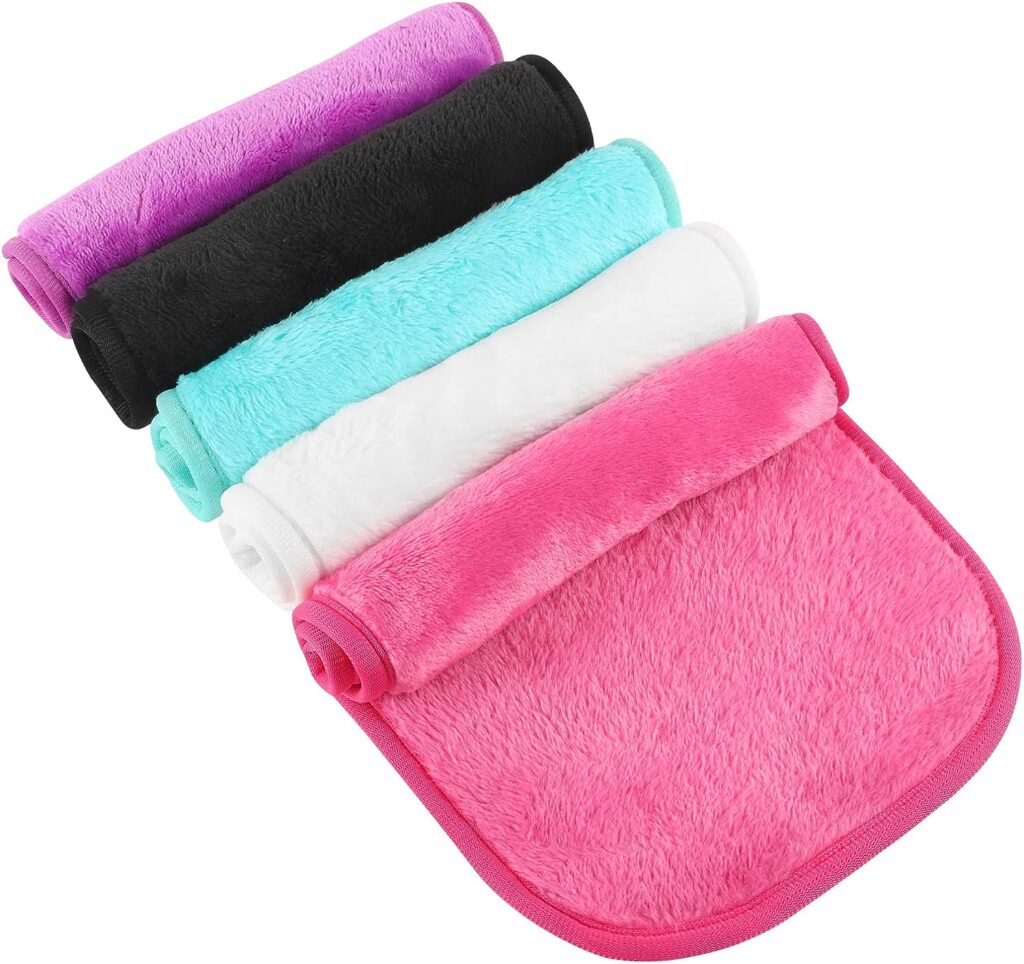
These face cloths are not your average face cloth, they’re way softer. In the UK, you can find them easily in TK Maxx, Superdrug and Primark. Buy a few so that you don’t have to use the same one for more than two days in a row.
7. Complete the rest of your skincare routine

Now that you’re done cleansing, your double cleansing routine is complete. If you’re going to apply acids or a retinoid, you should gently pat your face dry with a clean towel before applying. If you’re going to use hydrating serums, simply apply them on top of your already damp skin.
Whatever you do, don’t let your face air dry! This will cause transepidermal water loss (TEWL), which means the water will evaporate off your face, taking some of the existing moisture within your skin with it – AKA, it’ll make it drier if you make a habit of this.
Tips for the perfect double cleansing routine
Now that you have your double cleansing routine down, here are some of my personal tips for an ultra effective routine.
- Make sure you cleanse for long enough. So many people are only cleansing for 10-15 seconds, which isn’t long enough to cleanse thoroughly. Consider setting a stop watch.
- Make sure you’re changing your face cloth at least every two uses. Ideally you should use a fresh cloth each time you cleanse.
- If you’re going to use a cloth to cleanse with on two consecutive days, make sure it dries out properly in between uses. If you don’t and it’s still damp, bacteria will have begun collecting in it.
- If the cloth smells – there’s bacteria present! Don’t use it and throw it in the washing machine asap.
- Make sure you use soft cloths. Old fashioned flannels are actually very abrasive, especially if they’re well used and have gone crispy. If you use these, you may not be realising that you’re exfoliating every time you use it, which can cause unnecessary skin barrier damage.
- Make sure you wash your hands before you cleanse your face or apply skincare.
- Make sure you’re using warm or tepid water when you double cleanse. Never use hot water – even in the shower! Hot water dries out the skin and causes both irritation, redness and excess oil production.
How often should you double cleanse?
I often get asked ‘do you need to double cleanse in the morning?’ and the answer is no. Obviously it’s a preference, but I think it’s unnecessary to do this and can cause unwanted side effects like dryness and breakouts.
The main reason you should double cleanse in the evening is because you’ve most likely been wearing sunscreen, makeup or both in the day. In the morning, you don’t have this problem.
If you’re wondering ‘do I need to double cleanse if I’m not wearing makeup?‘ (or sunscreen) the answer is: it depends.
If you’re wearing either makeup or sunscreen and you’re prone to clogged pores, I think it’s important. If you’re not wearing either, it’s less important.
Double cleanse products

Finding the right double cleansing products is a lot of trial, error and money. So to make it easier, let me share some skincare ingredients I avoid in double cleansing products.
I’m not usually a fan of fear mongering around ingredients, because ingredients on their own are rarely ‘bad’ or ‘good’. It’s more about the formula as a whole and making educated guesses. Read more about this in the blog post I wrote on how accurate skincare ingredient checker websites and ‘pore clogging ingredients’.
However, sometimes you have to make a few exceptions, and these are mine.
Double cleansing ingredients to avoid
- Ethylhexyl palmitate – you will find most balms include this as the first ingredient or the ‘base’ of which it’s made out of. I believe it’s fine for some, but best avoided if you’re acne prone or sensitive.
- Fragrance – I avoid fragrance in nearly all of the products I buy. Even if you’re not sensitive to it now, it is a known cause of sensitivity over time with repeat use.
- Essential oils – same as above. Essential oils seem to have a better rep because they’re ‘natural’, but natural in skincare is not always better. Essential oils are derived from plants, which can be extremely irritating on the skin. Just because it’s from a plant, does not automatically make it good.
You might be wondering whether it’s necessary to avoid ingredients in wash-off products like cleansers. For most people, they’ll be totally fine.
However, I’ve learned the hard way many times that even wash off products can cause reactions, so I still choose to be selective here.
Now you know how to double cleanse, it’s time to browse double cleanse products!